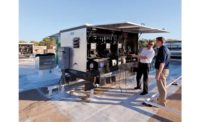There is no question that the current environmental trend right now is electrification, which is part of an overall strategy to decarbonize our society. In fact, it’s almost impossible to listen to the news, read the newspaper, or go to any industry event without hearing about the need to transition from fossil fuel appliances to electric appliances in order to reduce emissions that lead to climate change.
Many states have pledged to aggressively reduce — and ultimately eliminate — carbon emissions over the next few decades. California, for example, plans to achieve carbon neutrality by 2045, through a multipronged approach that includes a low-carbon electricity grid, load management, energy efficiency, low-GWP refrigerants, distributed generation, renewable gas, and building electrification.
At the federal level, President Biden signed an executive order to make the federal government carbon-neutral by 2050, aiming for a 65% reduction in greenhouse gas emissions by 2030 and an all-electric fleet of car and trucks five years later.
To encourage the transition away from fossil fuels, some communities are banning natural gas hookups for new buildings, meaning customers can no longer install furnaces or boilers. Berkeley, California, was the first city in the country to enact such a ban in 2019, and since then, communities from Seattle to New York City have adopted some form of a ban on the use of natural gas in new buildings.
Other states, including Arizona, Louisiana, and Texas, view this as an overreach and are enacting laws to prevent local governments from limiting the use of natural gas and propane. Arizona, for example, became the first state to pass legislation that bars cities from banning new gas hookups.
There is good reason to be careful about the rush to electrification. One of the main reasons is that the electric grid in the U.S. may not be ready for a massive influx of electric appliances and cars. There are already reliability issues with our aging grid, with blackouts occurring more frequently in certain parts of the country. Indeed, there is no better cautionary tale than Texas, which was hit by a freak winter storm last year. By some estimates, the February blackouts caused by Winter Storm Uri left about 4.5 million homes and businesses without power for several days, and more than 150 people died of hypothermia.
Another reason to think carefully about electrification is the cost. One study estimates that electrifying the entire U.S. would have a price tag of between $18 trillion and $29 trillion in first costs. That breaks down to between about $56,000 and $88,000 per person in the U.S. In California alone, where over 60% of households rely on natural gas for space heating, water heating, and cooking, experts say the price to electrify existing structures will cost in the multiple hundreds of billions of dollars. Those costs would likely fall disproportionately on poor and disadvantaged communities.
When it comes to using heat pumps — which is the equipment of choice for most electrification strategies — there are also drawbacks. For example, most heat pumps do not perform optimally in cold climates, so expensive electric resistance heat must often be used as a backup. Not only will customers receive higher energy bills, they will likely not be as comfortable in certain parts of the country.
Heat pumps also contain more moving parts than gas furnaces and have a shorter lifespan, so they need to be replaced more often. In addition, most heat pumps use HFC refrigerants, which experts cite as being potent greenhouse gases that contribute to global warming.
As with most everything in life, perhaps moderation would be a better way to approach electrification. For example, instead of turning off natural gas in certain communities, incentivize consumers to install a heat pump with their furnace. That way they can use the heat pump most of the time and only use the furnace on really cold days. While this hybrid approach is used, the U.S. could take the time to improve its electric grid so that it is more reliable and resilient before flooding it with new appliances.





